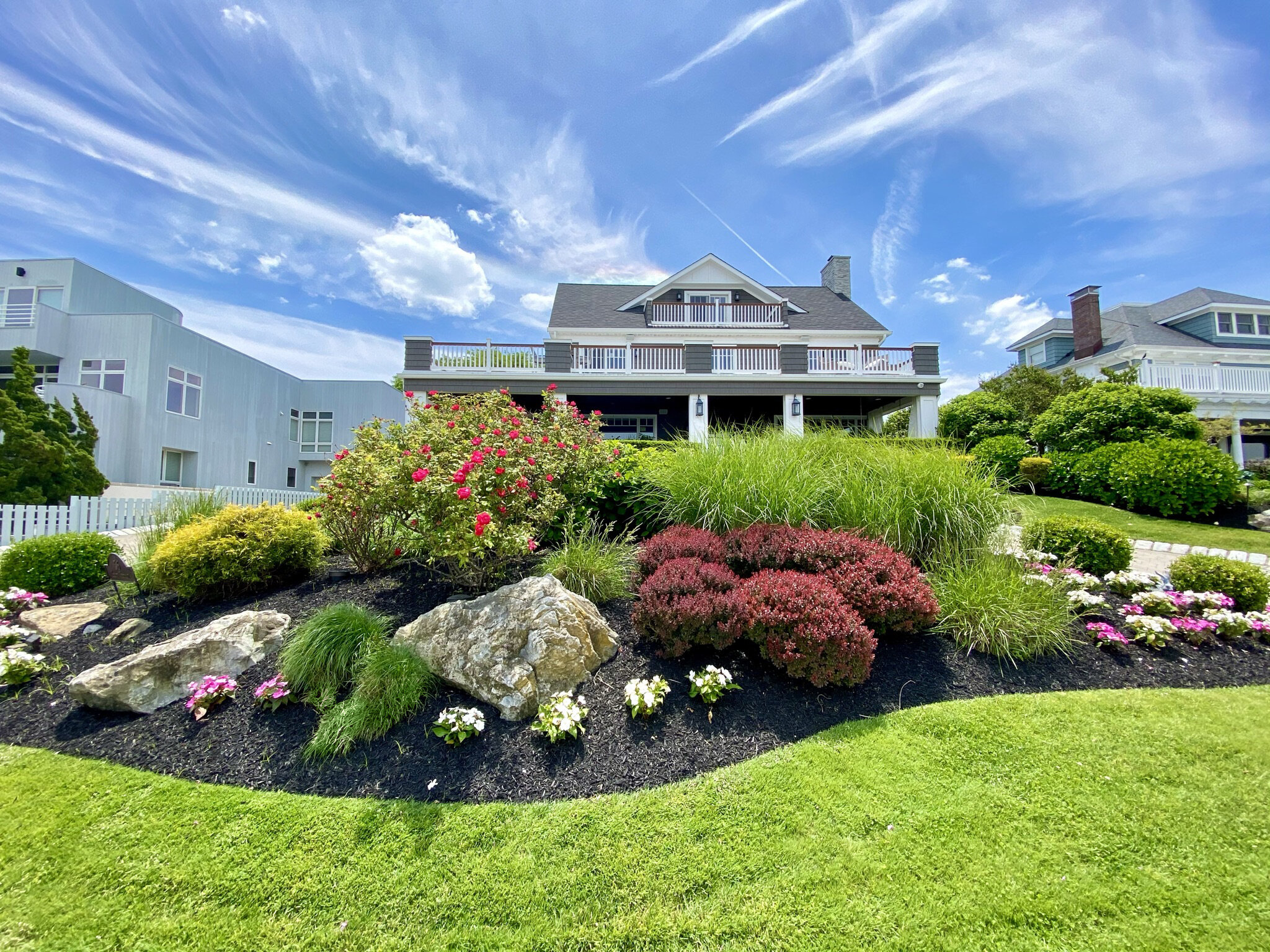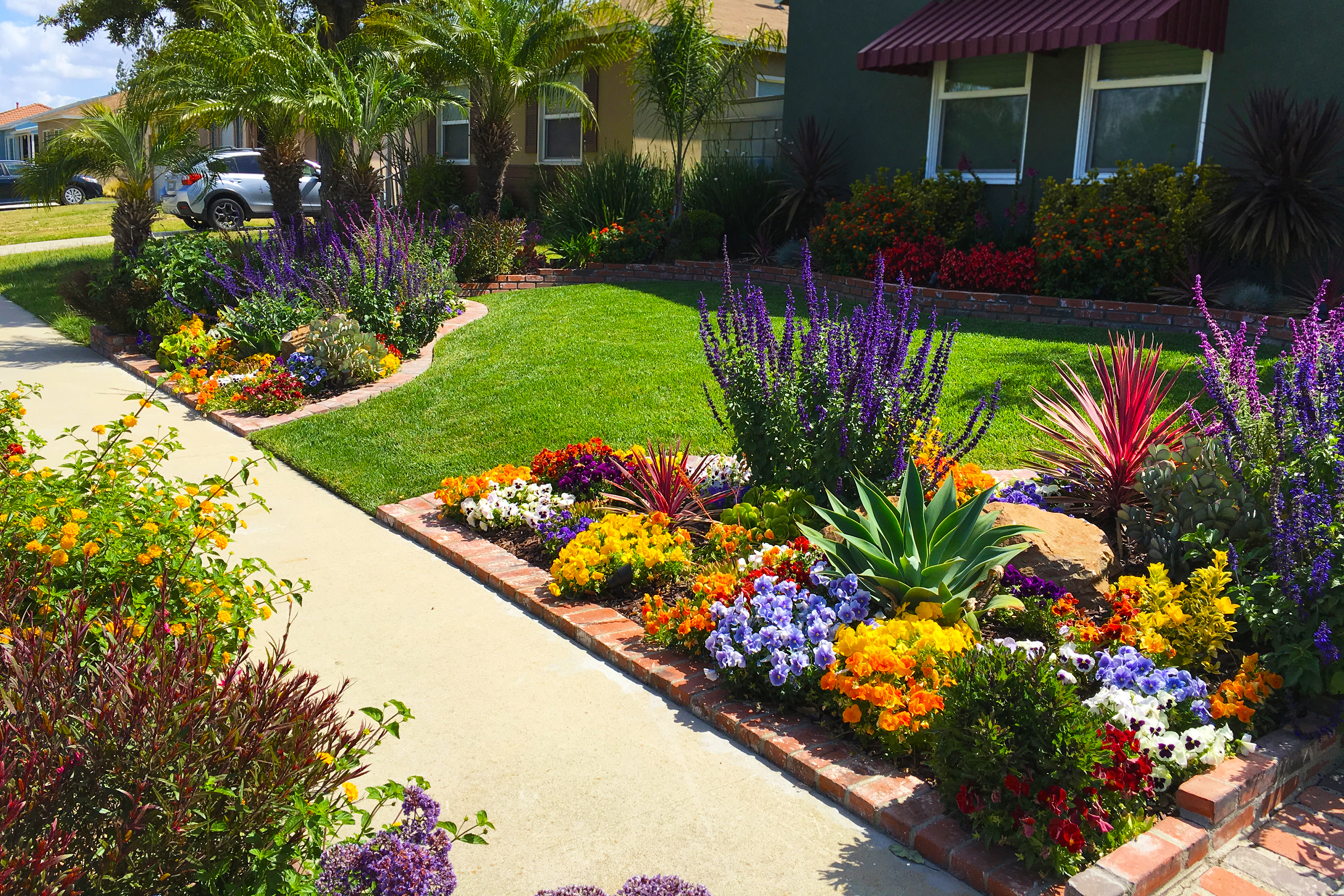Leading Tips for Enhancing Your Garden with Palm Desert Landscaping Concepts
Leading Tips for Enhancing Your Garden with Palm Desert Landscaping Concepts
Blog Article
A Comprehensive Overview to Creating and Implementing Effective Landscape Design Solutions
The art and science of landscape design prolong past plain aesthetics; they include a thoughtful integration of style concepts, environmental stewardship, and functional execution. What strategies can one employ to make sure these landscapes not just grow but likewise prosper in harmony with their environments?

Recognizing Landscape Style Concepts
One could question what foundational elements contribute to effective landscape style. At its core, successful landscape design rests on a number of vital concepts that lead the setup and choice of aspects within a space. These concepts include unity, percentage, rhythm, and equilibrium, each serving to develop a harmonious exterior setting.
Unity describes the cohesive relationship amongst different parts, making sure that they function together cosmetically and functionally. Equilibrium can be attained through unbalanced or in proportion setups, allowing the landscape to really feel secure and welcoming. Proportion includes comprehending the scale of elements in regard to each other and the surrounding environment, promoting aesthetic consistency and comfort.

Examining Your Outdoor Space
Before implementing the concepts of landscape design, an extensive evaluation of your exterior area is essential. This preliminary assessment aids specify the range of your landscaping project and guarantees that your design lines up with the unique attributes of your residential or commercial property. Begin by examining the dimensions of your room, taking specific measurements to recognize the available location for numerous elements such as pathways, outdoor patios, and yards.
Next, observe the existing features of your landscape, consisting of topography, dirt top quality, and drainage patterns. These variables significantly influence plant selection and positioning. In addition, examine the sunshine exposure across various locations throughout the day, as this will affect the kinds of plants that thrive in your garden.
Take into consideration the microclimates produced by frameworks, trees, and various other barriers, as they can impact temperature level and moisture degrees. Last but not least, take note of any kind of existing plants or hardscape components that you want to maintain or get rid of. This extensive examination lays the groundwork for a effective and knowledgeable landscape design option, guaranteeing that your style is not just aesthetically pleasing but additionally practical and sustainable for several years to come.
Lasting Landscape Design Strategies
These practices not just advertise environmental balance but additionally improve the useful and aesthetic worth of a landscape. Executing efficient irrigation systems, such as drip watering, reduces water waste and makes sure that plants receive ample wetness (Palm Desert Landscaping).

One more effective method is the tactical positioning of hedges and trees to give natural windbreaks and color, hence decreasing power prices (Palm Desert Landscaping). Rain yards can be integrated into the landscape layout to handle stormwater drainage effectively, filtering system toxins before they enter rivers
Selecting the Right Plants
Choosing the right plants for your landscape is crucial to accomplishing both aesthetic charm and ecological harmony. The process begins with an understanding of your regional environment, dirt conditions, and the particular microenvironments within your landscape. check out this site Assessing elements such as sunshine direct exposure, moisture levels, and existing plants will aid you choose plants that flourish in your one-of-a-kind setting.
Take into consideration including indigenous plants, as they are well-adapted to regional conditions, call for much less maintenance, and assistance regional wild animals. In addition, picking a diverse array of varieties can enhance biodiversity while decreasing the danger of disease and insect outbreaks. It is necessary to evaluate the development behaviors, growing durations, and seasonal shades of prospective plants to develop a natural and dynamic landscape.
Additionally, think concerning my link the intended use the area; as an example, if the area will experience high foot website traffic, select resistant ground covers. By thoughtfully selecting plants that straighten with both your environmental needs and visual goals, you can produce a sustainable landscape that not only improves your residential property but likewise contributes favorably to the bordering environment.

Implementation and Upkeep Methods
When the best plants have actually been picked for your landscape, the focus changes to efficient application and continuous maintenance methods. Effective installation begins with appropriate website preparation, which includes soil testing to figure out nutrient levels and pH, adhered to by amending the soil as needed. Meticulously set up plants according to their growth behaviors and light demands, making certain sufficient spacing to promote healthy and balanced development.
Watering is a vital component of execution. Develop a watering schedule that thinks about the details requirements of each plant types, readjusting for seasonal adjustments. Making use of drip irrigation systems can boost water efficiency and decrease runoff.
Maintenance strategies should be carried out to guarantee the long life and vitality of your landscape. Normal jobs include weeding, mulching, and trimming to regulate growth and avoid disease. Fertilizing needs to be performed based on dirt tests, giving the required nutrients without over-fertilizing.
Keeping an eye on for illness and bugs image source is necessary; early detection can prevent substantial damages. Seasonal modifications to upkeep routines, such as preparing and winterizing perennials for spring development, will guarantee that your landscape continues to be healthy and visually appealing year-round.
Conclusion
Effective implementation and recurring upkeep better make sure the durability and vigor of landscapes. By incorporating these elements, landscapes can be transformed right into lovely, practical atmospheres that promote biodiversity and contribute favorably to area health.
One might wonder what foundational elements contribute to reliable landscape design. At its core, successful landscape style pivots on several essential concepts that assist the arrangement and option of components within an area.Choosing the right plants for your landscape is critical to achieving both aesthetic charm and eco-friendly harmony. It is crucial to assess the growth practices, flowering periods, and seasonal shades of possible plants to produce a dynamic and natural landscape.
When the right plants have actually been picked for your landscape, the emphasis changes to effective application and continuous upkeep approaches.
Report this page